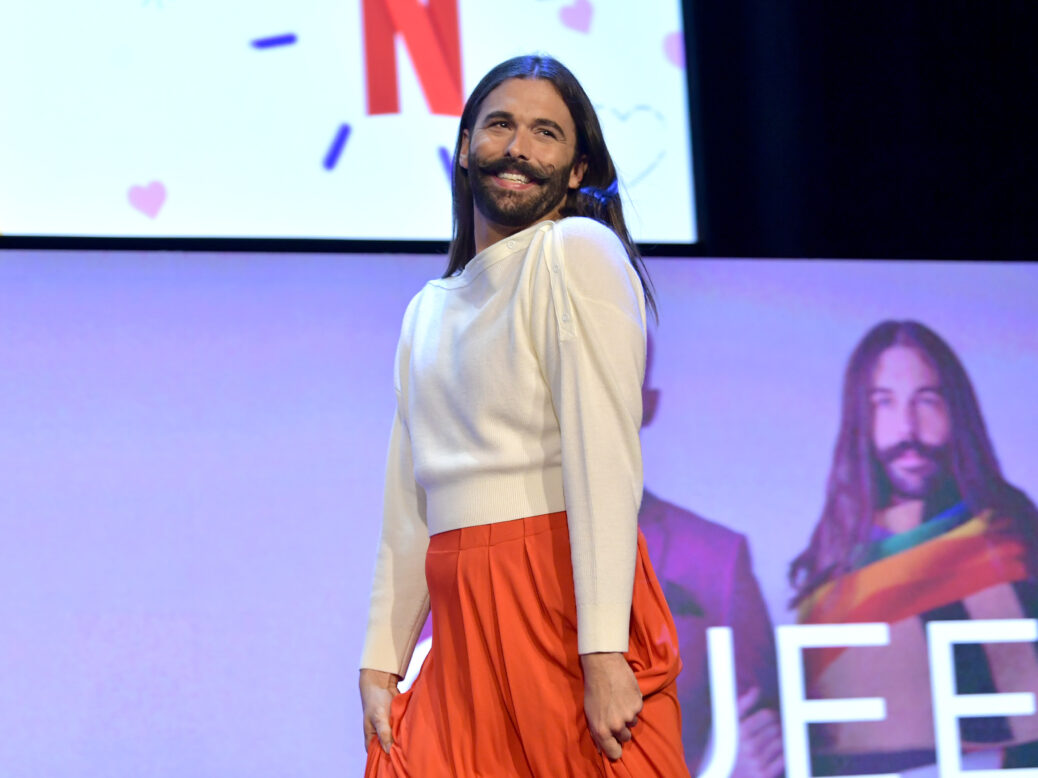
Jonathan Van Ness, a hairdresser from Illinois who you may know as 20 per cent of the “Fab Five”, the presenters of Netflix’s Queer Eye, is the latest celebrity to come out as non-binary. Though Ness is hardly the first – the list now includes musicians Miley Cyrus and Angel Haze, actors Ruby Rose and Cara Delevingne, writers, drag performers, politicians, activists and rabbis – there are still relatively few gay and lesbian non-binary people in the limelight
In a recent interview published online, Van Ness told Out magazine, “The older I get, the more I think that I’m non-binary — I’m gender nonconforming. Like, some days I feel like a man, but then other days I feel like a woman.”
“Non-binary”, as mentioned by Van Ness, refers to someone whose gender identity falls outside of the traditional male-female gender binary. Nowadays, as trans and non-binary identities have become more prominent and awareness of the different permutations of gender has grown, more lesbians – myself included – are identifying as non-binary.
This is not merely a teenage “phase” that young people will grow out of – many are in their 20s, 30s, 40s (I recently met a lesbian in her 50s who told me that had she been born later, she too would probably have concluded that she belonged to this category).
Many anti-trans activists like to portray lesbians a traditionalist bulwark against the concept of gender fluidity. A recent example of this was the event titled “Lesbians in Chairs”, which featured only people who were opposed to trans rights and ignored the voices of the many lesbians who support trans women.
The truth is that lesbians are often among the first to embrace the possibility of eschewing gender binaries. In many ways, this should come as no surprise – for decades, lesbians have been pushing the boundaries of how women were “supposed” to behave and dress.
In other words, lesbians and other WLW (Women who Love Women) have long been at the forefront of moves to redefine gender and gender roles, and this is still the case. Many – if not a majority – of the WLW I know personally identify as non-binary, some only recently, others for at least the past few years.
That this is a recent development for many of them – as is also the case with many non-binary celebrities – does not make it a “phase”, merely an eventual realisation of their own identity. A lot of them didn’t even realise they were attracted to women until their 20s: often until the point at which they were aware that this possibility was open to them, and the same is true of being trans and/or non-binary.
Non-binary identities are perhaps less common in Van Ness’ quarter of the LGBT community, but they are still far from non-existent. The Queer Eye star was preceded by the popular (and highly alliterative) singer-songwriter Sam Smith, who came out as non-binary in March, as did drag performer Adore Delano back in 2017. Van Ness, Smith and Delano all exist to challenge the preconception that being non-binary is exclusively the domain of those who were assigned female at birth (or “AFAB”).
The common image of non-binary people is probably that associated with celebrities such as the aforementioned Cyrus and Ruby Rose – AFAB, white and able-bodied. There is nothing wrong with belonging to this demographic, but it is important for young gay man – and indeed older gay men – to be aware that they too are free to explore and redefine their gender. Less well known, but arguably far more important in terms of representation, are non-binary people of colour like the performance artists Travis Alabanza and Alok Vaid-Menon.
One reason people may question the idea that gay and lesbian people can be non-binary is the belief that homosexuality can only be defined strictly as attraction to one binary gender (or even one binary sex, for those who are under the illusion that gay people’s sexuality cannot include trans people of the same gender).
In fact gay people have had no difficulty accommodating non-binary identities into their sexualities. Lesbians, for instance, will often define their attraction as including some non-binary people and not others, depending on the nuances of the other person’s gender identity (although this will often be a matter of personal preference which varies from person to person).
Though Van Ness is one of only a handful of celebrities to publicly identify as non-binary, as people become more familiar with the idea of rejecting rigid gender categories, it’s likely that the Queer Eye star won’t be the last.
Beth Desmond is a translator who has also written for Prospect and The Social Review. She tweets @languesbians




